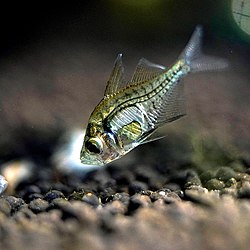| Asiatic glassfishes Temporal range: | |
|---|---|
 | |
| Indian glassy fish, Parambassis ranga | |
| Scientific classification | |
| Kingdom: | Animalia |
| Phylum: | Chordata |
| Class: | Actinopterygii |
| Order: | Mugiliformes |
| Family: | Ambassidae Klunzinger, 1870 |
| Genera [1] | |
Ambassis Contents | |
The Asiatic glassfishes are a family, the Ambassidae, of freshwater and marine ray-finned fishes. Some species are known as perchlets.
The family has also been called Chandidae, and some sources continue to use the name, [2] but as Ambassidae was used earlier, it has precedence over Chandidae, which was first used in 1905. [3]
